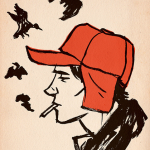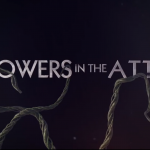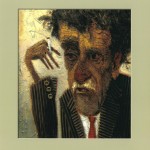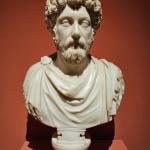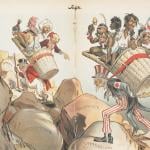Like most biographies worth their salt, Alan Jacobs’s 2005 biography of C. S. Lewis isn’t just a collection of dates and facts. The Narnian gives the reader a sense of the development and scope of Lewis’s intellectual and emotional life—often in relation to the more “factual” events of that life. Entertaining and accessible, Jacobs’s biography is ideal for the reader who has encountered the Chronicles of Narnia and wants to know how they relate to Lewis’s other writings, especially his apologetic works like Mere Christianity.
Jacobs’s biography is particularly strong in showing the continuity of themes across Lewis’s fiction and nonfiction, as well as how these themes connect to Lewis’s personal life. I’ve read most of Lewis’s published letters and know a good deal about him, but The Narnian helped me to see even works I’ve read multiple times, like Till We Have Faces, in a new light. For example, I’d always thought Lewis showed a great deal of sympathy for Till We Have Faces’s rather unlikable narrator Orual, the queen who finally delivers her complaint to the gods, only to discover that her carefully written polemic is a repetitive, whiny babble. I’d never considered, however, the parallels between Orual’s jealousy of the god Cupid’s seduction of her sister and Mrs. Moore’s* jealousy over Lewis’s conversion to Christianity.
I don’t want to imply that Jacobs paints Till We Have Faces or any of Lewis’s other works as veiled autobiography. To the contrary. Jacobs knows his literary theory better than anyone I know (in fact, he taught it to me in college), and he would never claim a simplistic “this happened in the author’s life, and therefore the novel is really about this event” interpretation. Till We Have Faces is no more “about” Mrs. Moore and Jack Lewis than it is “about” the Greek pantheon. However, Jacobs doesn’t shy away from pointing out reflections of major themes in Lewis’s experience, as they crop up in both his fiction and his life story.
Jacobs sets the introduction to The Narnian in 1949, and when the biography returns via chronology to this period in Lewis’s life, it holds some of the book’s most interesting passages. 1949 was not an easy time for Lewis. Mrs. Moore was infirm and needed care, his older brother Warnie (who lived with them) was going on alcoholic binges, and Lewis himself faced high demands from his increasingly public status, as well as from his academic job at Oxford. It was also the year he began writing The Lion, the Witch, and the Wardrobe.
Some depict this period in Lewis’s life as a turn from apologetics to “children’s stories” because of some sort of faith crisis. Jacobs walks the middle line, acknowledging Lewis’s very real fears and doubts during this time but also showing (as he does throughout The Narnian) the consistency in Lewis’s theology throughout his Christian adulthood. Jacobs turns to Lewis’s own words to describe the famous apologist’s dissatisfaction with apologetics: “I have found that nothing is more dangerous to one’s own faith than [doing] the work of an apologist. No doctrine of the Faith seems to me so spectral, so unreal as one that I have just successfully defended in a public debate.”
No, don’t put away your copy of Mere Christianity. Lewis isn’t repudiating the value of that book or the value of apologetics in general. But, as someone who had always been skilled in rhetoric, he was painfully aware and mistrustful of that very skill. In the trajectory that Jacobs traces, Lewis turned for refreshment of his faith to that which had enlivened and enchanted it in the first place: to myth, to story.
And, of course, the faith of many successive generations has been enlivened and enchanted by the stories of Narnia. Jacobs does also deal with those, like Philip Pullman, who claim to have been disgusted and enraged by the Chronicles of Narnia. However, he mostly sees the detractors as evidence of the stories’ ongoing power. If no one read them, no one would be upset.
Whatever the quality of the Prince Caspian film, I hope that people will go to see it. I hope that they will be enchanted and taken captive by myth. And I hope they come to know, as Lewis did, that some myths are True.
*A word here about Mrs. Moore, because she’s one of the sensitive and difficult subjects of any Lewis biography. First, the facts: as a young man going off to fight in World War I, Lewis had made a pact with his friend Paddy Moore that, if one of them died in battle and one survived, the survivor would take care of the other’s parent. Paddy died. Lewis, at 19, held up his end of the bargain for Janie Moore and her 12-year-old daughter Maureen. Mrs. Moore—or “Minto,” as Lewis came to call her—and Lewis shared a home until she died in 1951. So far, so good. A young soldier keeps his promise to his fallen comrade. The sticky bit is that, at least at one early point, Lewis and Minto seem to have had romantic feelings for each other, though, as Lewis was very secretive about the relationship, we only know this from a couple of letters telling a friend that he was in love. As Jacobs points out, when people become obsessed about the “Mrs. Moore question,” what’s usually on their minds is the sex. The answer is that we don’t know. If they did have a sexual relationship, chances are it was over by the time Lewis became a Christian, at the age of 32. Mrs. Moore remained an atheist to her dying day, and this caused some tension between the two, though witnesses claim there was a good deal of tenderness too. Anyway. So much for Mrs. Moore. Jacobs deals with her fairly, not pruriently, making it clear just how little we know about this part of Lewis’s life.


